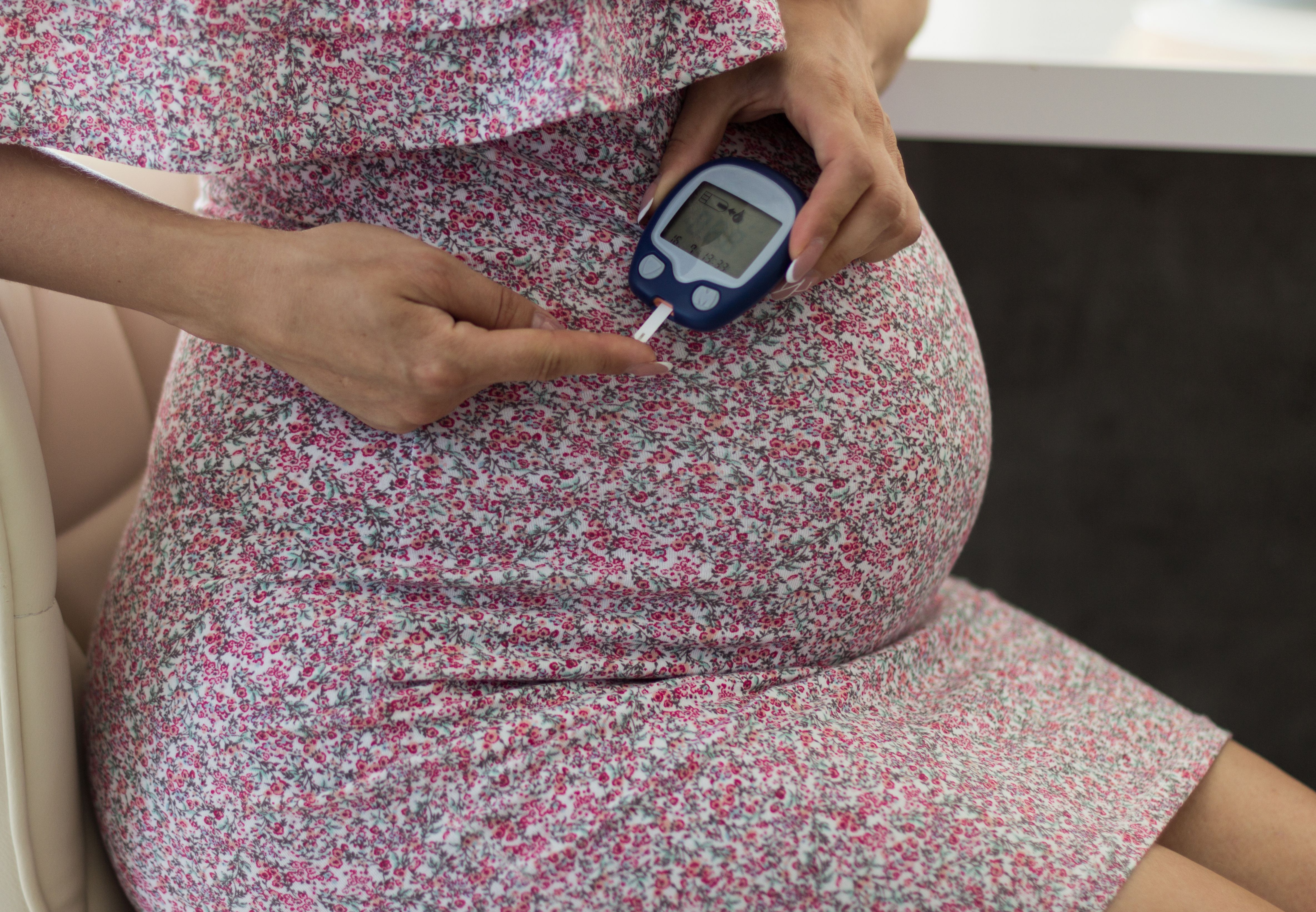Intrapartum primary cesarean delivery (PCD) risk can be measured in pregnancies complicated by gestational diabetes mellitus (GDM) using a clinically pragmatic model, according to a recent study published in the American Journal of Obstetrics & Gynecology.
Takeaways
- Gestational diabetes mellitus (GDM) affects around 14% of US pregnancies, and there has been a 33% increase in GDM-complicated pregnancies over the last decade. Cesarean delivery (CD) in GDM pregnancies poses significant maternal morbidity risks.
- A history of primary cesarean delivery (PCD) is the most common indication for subsequent CD, emphasizing the importance of reducing PCD risk in pregnant individuals with GDM. However, the risk of CD is 1.5 times higher in patients with GDM.
- Researchers developed a prediction model using data from patients with GDM to identify the risk of cesarean delivery. The model included variables such as insulin requirement, preeclampsia, nulliparity, fetal size, early pregnancy BMI, polyhydramnios, maternal age, and hemoglobin A1C value.
- The developed prediction model demonstrated efficacy in predicting CD risk among patients with GDM. The model's receiver operating characteristic (ROC) curve had an area under the curve (AUC) of 0.75 during development, which increased to 0.76 after validation.
- The model's predictive ability was notable, with a strong correlation between predicted and observed risks. Notably, pregnancies with predicted probabilities below 19% had a low CD rate (9%), while those with probabilities between 70% and 89% had a high CD rate (81%).
GDM impacts approximately 14% of US pregnancies, with a 33% increase in the number of pregnancies complicated by GDM observed in the last decade. Cesarean delivery (CD) is associated with significant maternal morbidity risk in pregnancies complicated by GDM, including abruption, hysterectomy, uterine rupture, and hemorrhage.
A history of PCD is the most common indication for subsequent CD, making it vital to decrease PCD risk in pregnant individuals with GDM. However, the risk of CD is increased 1.5-fold in patients with GDM.
A prediction model including multiple variables may be able to identify CD risk in pregnant patients with GDM. Investigators conducted a study to develop a prediction model evaluating this risk.
Data on patients with GDM between January 1, 2002, and March 31, 2013, was obtained from a tertiary care hospital. Patients included nulliparous and parous individuals with viable fetuses and a delivery at 34 week’s gestation or more. Unscheduled PCD was the primary outcome of the analysis.
Exclusion criteria included history of previous CD, scheduled PCD, placenta previa, previous uterine surgery, breech, malpresentation, undiagnosed preexisting diabetes mellitus, and missing delivery type or candidate predictors data. Carpenter-Coustan criteria or a 1-hour glucose tolerance test was used to diagnose GDM.
Searches of PubMed, Obstetrics & Gynecology, the American Journal of Obstetrics & Gynecology, and Google Scholar were conducted to determine24 candidate variables potentially associated with CD. Search terms included “CD,” “CD,” “GDM,” and “risk factors for cesarean.”
Candidate variables included early body mass index (BMI), tobacco or alcohol use, insurance type, race and ethnicity, parity, hypertensive disorders of pregnancy, chronic hypertension, fetal growth restriction (FGR), large for gestational age (LGA),assisted reproductive technology (ART) use in conception, and polyhydramnios.
Further candidate variables included GDM diagnosis under 20 weeks’ gestation, insulin treatment, glucose tolerance test values for 1 hour and subsequent 3-hour glucose tolerance test, and history of hospitalization for glycemic control.
There were 3570 pregnancies included in the final analysis, 38% of which had public insurance, 55% were nulliparous, 25% required insulin in pregnancy, and 62% were non-Hispanic White. The mean age of patients was 31 years.
Eight of the candidate predictor variables were included in the model: insulin required in pregnancy, preeclampsia, nulliparity, LGA, early pregnancy BMI, polyhydramnios, maternal age at delivery, and first hemoglobin A1C value in pregnancy. Of these, the strongest associations with CD were from LGA, polyhydramnios, nulliparity, and hemoglobin A1C value.
In the development model, the receiver operating characteristic (ROC) curve had an area under the curve (AUC) of 0.75. After model validation, the AUC was 0.76, with a strong correlation between predicted and observed risks.
Only 9% of pregnancies with a predicted probability between 0% and 19% had a CD. In comparison, 81% of patients with a 70% to 89% risk of CD had a CD. The model was highly predictive for patients with a predicted probably of CD at 80% or greater.
These results indicated efficacy from the predictive model in predicting CD risk among patients with GDM. Investigators recommended this model be used as a tool to help patients prevent PCD.
Reference
Ramos SZ, Lewkowitz AK, Lord MG, et al. Predicting primary CD in pregnancies complicated by gestational diabetes mellitus. Am J Obstet Gynecol. 2023;229:549.e1-16. doi:10.1016/j.ajog.2023.06.002

